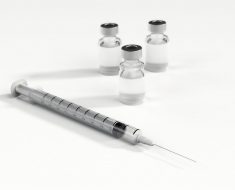As evidence builds of more long-term effects linked to concussion, a nationwide study led by scientists at UCSF and the University of Southern California has found that more than half of the patients seen at top-level trauma centers may fall off the radar shortly after diagnosis, placing in jeopardy treatments for these long-term effects.
Among 831 patients treated in hospital emergency departments for concussion, or mild traumatic brain injury (TBI), only 44 percent saw a physician or other medical provider within three months, the scientists report. The study appears in JAMA Network Open on May 25, 2018.
Concussion and other more serious forms of traumatic brain injury affect between 3.2 million and 5.3 million Americans, according to the Centers for Disease Control and Prevention. An expanding volume of research has found that traumatic brain injuries are associated with an elevated risk for neurodegenerative and psychiatric disorders. Research includes two UCSF studies published earlier this month that found a link between concussion and Parkinson’s disease, and concussion and dementia.
“The focus of concussion has been directed at a very narrow segment of the population—football players and professional athletes,” said the study’s co-author Geoffrey Manley, MD, Ph.D., a professor of neurosurgery in the UCSF Department of Neurological Surgery and member of the UCSF Weill Institute for Neurosciences. “Everyone who falls off their bike or slips off their skateboard or down the steps needs to be aware of the potential risks of concussion.”
Concussion Treated as Minor Injury for ‘Too Many Patients’
“This is a public health crisis that is being overlooked,” said Manley, who is the principal investigator of TRACK-TBI, which has collected and analyzed clinical data on close to 3,000 traumatic brain injury patients from 18 top-level trauma centers nationwide, and was used in this study. “If physicians did not follow up on patients in the emergency department with diabetes and heart disease, there would be accusations of malpractice. For too many patients, concussion is being treated as a minor injury.”
The researchers found that of those patients who saw a provider within three months, 15 percent visited a clinic that specialized in concussion or traumatic brain injuries, while approximately half saw a general practitioner, who may or may not have training in managing this condition. More worrisome was the finding that even among those concussion patients with more serious signs and symptoms, many had no further care after hospital discharge. Of the 236 patients whose CT scans indicated a lesion, and 279 patients with three or more moderate-to-severe post-concussive symptoms, 40 and 41 percent, respectively, did not see a physician or health provider within three months after discharge.
Additionally, approximately half of the patients were discharged without a handout explaining symptoms and red flags requiring follow-up.
“The lack of follow-up is concerning because these patients can receive adverse and debilitating symptoms for a very long time,” said lead author Seth Seabury, Ph.D., director of the Keck-Schaeffer Initiative for Population Health Policy at the University of Southern California. “Even patients who reported experiencing significant post-concussive symptoms often failed to see a provider. This reflects a lack of awareness among patients and providers that their symptoms may be connected to brain injury.”
TBIs Endemic Among Homeless, Prison Populations
Undiagnosed and untreated traumatic brain injuries are endemic in the homeless and incarcerated populations, said Manley, who is also chief of neurosurgery at the Zuckerberg San Francisco General Hospital and Trauma Center.
“We have all these people untreated and no real system of care,” he said. “Even in the best trauma centers in the country, patients with concussion are not getting the follow-up care they desperately need.”
Source: Read Full Article




